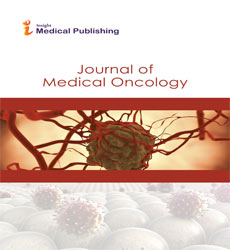Use of quantitative immunohistochemistry to evaluate marker expression in breast cancer
Abstract
Breast cancer is a heterogenous disease and there is a great need for further individualized treatment. Due to extensive intertumor and intratumor heterogeneity, immunohistochemistry provides valuable spatially resolved marker analysis at the tissue level. Pathologists typically evaluate protein marker expression visually in formalinfixed paraffin-embedded tumor sections by chromogenic immunohistochemistry. However, pathologist scoring of chromogen staining intensity is subjective and provides only reduced data that is discrete, either ordinal (e.g. 1, 2, 3) or nominal (negative/positive). In contrast, emerging digital pathology platforms allow quantification of chromogen or fluorescence signals by computer-assisted image analysis, providing continuous signal intensity values. Fluorescence-based immunohistochemistry (IF-IHC) provides greater dynamic signal range than chromogenimmunohistochemistry. Combined with image analysis software, fluorescencebased immunohistochemistry holds potential for enhanced sensitivity and greater analytic resolution resulting in more robust quantification. However, commercial fluorescence scanners and image analysis software differ in features and capabilities. Vendors’ claims of objective quantitative immunohistochemistry are difficult to validate since pathologist scoring is subjective and, importantly, there is no accepted gold standard to measure against. We will present validation studies and progress with quantitative immunohistochemistry on large cohorts of breast cancer using different technologies. The path towards implementation of objective tumor marker quantification in pathology laboratories will be discussed.
Open Access Journals
- Aquaculture & Veterinary Science
- Chemistry & Chemical Sciences
- Clinical Sciences
- Engineering
- General Science
- Genetics & Molecular Biology
- Health Care & Nursing
- Immunology & Microbiology
- Materials Science
- Mathematics & Physics
- Medical Sciences
- Neurology & Psychiatry
- Oncology & Cancer Science
- Pharmaceutical Sciences
